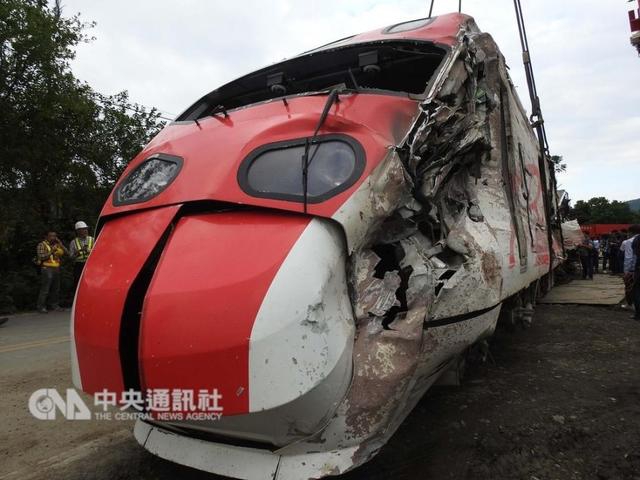
The displacement of a car refers to the sum of all cylinder capacities of the engine, usually expressed in liters (L). The volume of each cylinder depends on the cylinder diameter and piston stroke, also known as single cylinder displacement. Engine displacement is the sum of the working volume of each cylinder.
Displacement refers to the exhaust volume of the engine.It refers to the volume of fluid that is sucked in or discharged in each distance or each cycle; the engine displacement is the total operating volume of each cylinder, which is usually expressed in liters; usually, the larger the displacement, the higher the process demand of the automobile engine and the greater the output power.
The displacement of a car refers to the sum of the capacity of all cylinders in the engine. For example, a car engine has 4 cylinders, and the capacity of each cylinder is 0.5L, so the displacement of the engine is 0.5L*4=0L.
Car displacement refers to describing the size of the engine, usually using displacement or exhaust volume. Displacement refers to the volume of fluid inhaled or discharged per stroke or cycle. Automobile displacement is an important design parameter for inspecting automobiles. It is easier to represent the engine size than the shaft diameter and cylinder number. Many index values of the engine are closely related to the displacement.
What does exhaust volume mean? It refers to the volume of gas inhaled or discharged by the piston in each stroke. The volume of gas generated by moving the piston from the highest point to the lowest point is called cylinder emissions; when the engine has multiple cylinders, the sum of the gas volumes of all cylinders is called engine emissions. It is generally expressed by liter (l).
Car displacement refers to the size of the engine. The following is an introduction to automobile displacement: Automobile displacement is an important structural parameter to measure automobiles. It can represent the size of the engine more than the cylinder diameter and cylinder number. Many indicators of the engine are closely related to the exhaust volume.

Displacement refers to the special term for the amount of fluid sucked or discharged in each stroke or cycle in the hydraulic transmission. Vehicle displacement is an important parameter to measure a vehicle. The displacement information is written on the body or rear of many domestic cars, although some rears are not marked.
Car displacement refers to describing the size of the engine, usually using displacement or exhaust volume. Displacement refers to the volume of fluid inhaled or discharged per stroke or cycle. The displacement of the car is checked.An important design parameter of the inspection car is more likely to represent the engine size than the shaft diameter and the number of cylinders. Many index values of the engine are closely related to the displacement.
What does vehicle displacement mean&mdash&mdash introduction Describes the size of the engine, usually displacement or exhaust volume. Displacement refers to the amount of fluid inhaled or discharged per stroke or cycle. Automobile displacement is an important structural parameter for measuring automobiles. It represents the size of the engine better than the diameter and number of cylinders.
Engine displacement = single cylinder displacement × number of cylinders. Single cylinder displacement = (π×cylinder diameter × cylinder diameter) ÷ 4÷1000×stroke (unit cc). Generally speaking, the displacement of the cylinder is onlyIt is an approximate value, generally higher than the target value. It is not exactly 48cc but certainly does not exceed 49cc.
At present, the most commonly used engine in family cars is 4-cylinder, and the total displacement is equivalent to the displacement of a single cylinder*4(L). There are also 3-cylinder engines with small displacements. 6-cylinders are basically large cars, and generally there are very few households with larger than 6 cylinders.
The displacement of a car refers to the sum of the capacity of all cylinders in the engine. For example, a car engine has 4 cylinders, and the capacity of each cylinder is 0.5L, so the displacement of the engine is 0.5L*4=0L.
The displacement of a car is calculated according to the volume of fluid inhaled or discharged per stroke or each cycle. The unit of measurement of displacement is L, of which T does not refer to the unit of displacement of the car, but indicates that the car uses a turbocharged engine.
The classification of cars in China is determined by the size of the displacement.
Displacement is the sum of the working volume of each cylinder of the engine, that is, the volume swept by the piston from the upper stop to the lower stop multiplied by the number of cylinders.
HS code applications in compliance software-APP, download it now, new users will receive a novice gift pack.
The displacement of a car refers to the sum of all cylinder capacities of the engine, usually expressed in liters (L). The volume of each cylinder depends on the cylinder diameter and piston stroke, also known as single cylinder displacement. Engine displacement is the sum of the working volume of each cylinder.
Displacement refers to the exhaust volume of the engine.It refers to the volume of fluid that is sucked in or discharged in each distance or each cycle; the engine displacement is the total operating volume of each cylinder, which is usually expressed in liters; usually, the larger the displacement, the higher the process demand of the automobile engine and the greater the output power.
The displacement of a car refers to the sum of the capacity of all cylinders in the engine. For example, a car engine has 4 cylinders, and the capacity of each cylinder is 0.5L, so the displacement of the engine is 0.5L*4=0L.
Car displacement refers to describing the size of the engine, usually using displacement or exhaust volume. Displacement refers to the volume of fluid inhaled or discharged per stroke or cycle. Automobile displacement is an important design parameter for inspecting automobiles. It is easier to represent the engine size than the shaft diameter and cylinder number. Many index values of the engine are closely related to the displacement.
What does exhaust volume mean? It refers to the volume of gas inhaled or discharged by the piston in each stroke. The volume of gas generated by moving the piston from the highest point to the lowest point is called cylinder emissions; when the engine has multiple cylinders, the sum of the gas volumes of all cylinders is called engine emissions. It is generally expressed by liter (l).
Car displacement refers to the size of the engine. The following is an introduction to automobile displacement: Automobile displacement is an important structural parameter to measure automobiles. It can represent the size of the engine more than the cylinder diameter and cylinder number. Many indicators of the engine are closely related to the exhaust volume.

Displacement refers to the special term for the amount of fluid sucked or discharged in each stroke or cycle in the hydraulic transmission. Vehicle displacement is an important parameter to measure a vehicle. The displacement information is written on the body or rear of many domestic cars, although some rears are not marked.
Car displacement refers to describing the size of the engine, usually using displacement or exhaust volume. Displacement refers to the volume of fluid inhaled or discharged per stroke or cycle. The displacement of the car is checked.An important design parameter of the inspection car is more likely to represent the engine size than the shaft diameter and the number of cylinders. Many index values of the engine are closely related to the displacement.
What does vehicle displacement mean&mdash&mdash introduction Describes the size of the engine, usually displacement or exhaust volume. Displacement refers to the amount of fluid inhaled or discharged per stroke or cycle. Automobile displacement is an important structural parameter for measuring automobiles. It represents the size of the engine better than the diameter and number of cylinders.
Engine displacement = single cylinder displacement × number of cylinders. Single cylinder displacement = (π×cylinder diameter × cylinder diameter) ÷ 4÷1000×stroke (unit cc). Generally speaking, the displacement of the cylinder is onlyIt is an approximate value, generally higher than the target value. It is not exactly 48cc but certainly does not exceed 49cc.
At present, the most commonly used engine in family cars is 4-cylinder, and the total displacement is equivalent to the displacement of a single cylinder*4(L). There are also 3-cylinder engines with small displacements. 6-cylinders are basically large cars, and generally there are very few households with larger than 6 cylinders.
The displacement of a car refers to the sum of the capacity of all cylinders in the engine. For example, a car engine has 4 cylinders, and the capacity of each cylinder is 0.5L, so the displacement of the engine is 0.5L*4=0L.
The displacement of a car is calculated according to the volume of fluid inhaled or discharged per stroke or each cycle. The unit of measurement of displacement is L, of which T does not refer to the unit of displacement of the car, but indicates that the car uses a turbocharged engine.
The classification of cars in China is determined by the size of the displacement.
Displacement is the sum of the working volume of each cylinder of the engine, that is, the volume swept by the piston from the upper stop to the lower stop multiplied by the number of cylinders.
HS code verification in Middle Eastern markets
author: 2024-12-24 02:34How to track non-compliance incidents
author: 2024-12-24 01:03Supply contracts referencing HS codes
author: 2024-12-24 00:47Fisheries products HS code classification
author: 2024-12-24 00:45Cotton (HS code ) trade insights
author: 2024-12-24 00:35Import data for raw commodities
author: 2024-12-24 01:22Global regulatory compliance by HS code
author: 2024-12-24 01:19Global trade intelligence forums
author: 2024-12-24 01:12Region-specific HS code advisory
author: 2024-12-24 00:27International trade database customization
author: 2024-12-23 23:54 Enhanced due diligence via HS code
Enhanced due diligence via HS code
383.98MB
Check Maritime insurance via HS code data
Maritime insurance via HS code data
193.63MB
Check How to leverage customs rulings data
How to leverage customs rulings data
535.64MB
Check trade data analysis
trade data analysis
456.79MB
Check Customizable trade data dashboards
Customizable trade data dashboards
616.57MB
Check Processed meat HS code verification
Processed meat HS code verification
128.24MB
Check European Union HS code verification
European Union HS code verification
857.24MB
Check Global trade resource libraries
Global trade resource libraries
171.34MB
Check import data visualization
import data visualization
888.78MB
Check How to find niche import markets
How to find niche import markets
465.76MB
Check How to map trade data to SKUs
How to map trade data to SKUs
558.37MB
Check Global trade shipping route optimization
Global trade shipping route optimization
978.73MB
Check Furniture imports HS code analysis
Furniture imports HS code analysis
132.85MB
Check Data-driven customs paperwork reduction
Data-driven customs paperwork reduction
494.28MB
Check Refined metals HS code references
Refined metals HS code references
584.43MB
Check Apparel import export statistics
Apparel import export statistics
148.22MB
Check Global HS code standardization efforts
Global HS code standardization efforts
987.46MB
Check Agriculture trade by HS code in Africa
Agriculture trade by HS code in Africa
659.21MB
Check Bulk grain HS code insights
Bulk grain HS code insights
812.18MB
Check global market access
global market access
783.85MB
Check Africa import data trends
Africa import data trends
842.39MB
Check WTO trade compliance resources
WTO trade compliance resources
489.36MB
Check Industry benchmarking via HS codes
Industry benchmarking via HS codes
481.57MB
Check Global trade finance compliance checks
Global trade finance compliance checks
554.79MB
Check Agriculture trade data intelligence
Agriculture trade data intelligence
212.94MB
Check Automated import export risk alerts
Automated import export risk alerts
327.52MB
Check Global trade reporting frameworks
Global trade reporting frameworks
964.95MB
Check Maritime logistics HS code mapping
Maritime logistics HS code mapping
973.91MB
Check How to adapt to shifting trade policies
How to adapt to shifting trade policies
426.72MB
Check How to navigate non-tariff barriers
How to navigate non-tariff barriers
234.53MB
Check Predictive analytics for supplier risks
Predictive analytics for supplier risks
246.31MB
Check Insightful trade route analysis
Insightful trade route analysis
562.97MB
Check Country-specific HS code duty reclaims
Country-specific HS code duty reclaims
688.52MB
Check How to benchmark HS code usage
How to benchmark HS code usage
157.79MB
Check Global trade intelligence for banking
Global trade intelligence for banking
196.94MB
Check HS code-driven risk mitigation
HS code-driven risk mitigation
643.62MB
Check
Scan to install
HS code applications in compliance software to discover more
Netizen comments More
628 HS code-based opportunity in emerging economies
2024-12-24 01:58 recommend
334 International procurement intelligence
2024-12-24 01:39 recommend
795 Country-specific HS code conversion charts
2024-12-24 01:31 recommend
2723 HS code intelligence in freight auditing
2024-12-24 01:06 recommend
1340 Integrated circuits HS code verification
2024-12-24 00:15 recommend